By CDR Phillip J. Keuhlen, USN ret, USNA ’71
Introduction:
In over two decades of military leadership and a further two decades in corporate leadership I learned the importance of reading and believing what my potential adversaries said about their aims and planned methods.
During the Cold War we read Admiral Gorshkov’s “Red Star Rising at Sea” and “The Sea Power of the State” to understand what we might face at sea.
Today similar reading focuses on the China Aerospace Studies Institute’s series, In Their Own Words: Foreign Military Thought, and its translation of China’s “Science of Military Strategy (2013),” as one hopes today’s US military leadership does.
Yet, even though Progressives seceded philosophically from America’s founding values a century ago and have conducted lawfare to subvert the Constitution designed to protect those values for over a century [i],
Today’s US military leadership collectively demonstrates a profound ignorance of a current Progressive dogma mainstay, Critical Race Theory (CRT).
They display baffling support for its indoctrination in the US armed forces in Diversity, Inclusion and Equity (DIE) programs.
The underpinning of the US Navy DIE program is its Task Force One Navy Final Report, a deeply flawed effort. [ii] It was launched from twin assumptions that the Navy suffers from systemic racism and that diversity is a benefit to the Navy’s military mission.
Those assumptions are not supported by evidence, and the use of data and outside scholarship in support of the report’s findings and recommendations is flawed by both logical fallacies, and by data that is misapplied or misrepresented to support its distorted narrative.
Themes that are central to Critical Race Theory and its allied movements that are wholly absent from its precursor document [iii] find an active voice in the TF1N Charter and Final Report, confirming a philosophy and a political agenda on the part of those who wrote the Task Force One Navy Charter and steered the enterprise.
 Richard Delgado is one of the three founders of Critical Race Theory, the only one still living, and the only one to write broadly about its aims, allies and methods.
Richard Delgado is one of the three founders of Critical Race Theory, the only one still living, and the only one to write broadly about its aims, allies and methods.
His short, seminal work, Critical Race Theory [iv] (CRT), is pointedly missing from service leaders’ recommended reading, which invites the question of intentionality.
Delgado positions CRT as a domestic enemy of the US Constitution.
After all, Delgado positions CRT as a domestic enemy of the US Constitution, stating,
“Critical race theory questions the very foundations of the liberal order, including equality theory, legal reasoning, Enlightenment rationalism, and neutral principles of constitutional law.”
So let us delve into the history, intellectual antecedents, objectives, and methods of CRT in its founding father’s own words, as we would any potential foreign adversary’s work on strategy.
In Sections A-H all italicized quotes are extracted directly from Richard Delgado’s foundational work, Critical Race Theory. Bolded passages provide this author’s emphasis.
A. “What Is Critical Race Theory?”
“The critical race theory (CRT) movement is a collection of activists and scholars engaged in studying and transforming the relationship among race, racism, and power.
The movement considers many of the same issues that conventional civil rights and ethnic study discourses take up but places them in a broader perspective that includes economics, history, setting, group and self-interest, and emotions and the unconscious.
Unlike traditional civil rights discourse, which stresses incrementalism and step-by-step progress, critical race theory questions the very foundations of the liberal order, including equality theory, legal reasoning, Enlightenment rationalism, and neutral principles of constitutional law.”
After the first decade, critical race theory began to splinter and now includes a well-developed Asian American jurisprudence, a forceful Latino-critical (LatCrit) contingent, a feisty LGBT interest group, and now a Muslim and Arab caucus.
Although the groups continue to maintain good relations under the umbrella of critical race theory, each has developed its own body of literature and set of priorities.
For example, Latino and Asian scholars study immigration policy, as well as language rights and discrimination based on accent or national origin.
A small group of American Indian scholars addresses indigenous peoples’ rights, sovereignty, and land claims.
They also study historical trauma and its legacy and health consequences, as well as Indian mascots and co-optation of Indian culture.
Scholars of Middle Eastern and South Asian background address discrimination against their groups, especially in the aftermath of 9/11.”
B. “Early Origins”
- 1989 workshop
- Derrick Bell, Alan Freeman, and Richard Delgado
C. “Relationship to Previous Movements”
“As the reader will see, critical race theory builds on the insights of two previous movements, critical legal studies and radical feminism, to both of which it owes a large debt.
It also draws from certain European philosophers and theorists, such as Antonio Gramsci, Michael Foucault, and Jacques Derrida, as well as from the American radical tradition exemplified by such figures as Sojourner Truth, Frederick Douglass, W. E. B. Du Bois, Cesar Chavez, Martin Luther King, Jr., and the Black Power and Chicano movements of the sixties and early seventies.
From critical legal studies, the group borrowed the idea of legal indeterminancy – the idea that not every legal case has one correct outcome.
Instead, one can decide most cases either way, by emphasizing one line of authority over another or interpreting one fact differently from the way one’s adversary does.
The group also incorporated skepticism of triumphalist history and the insight that favorable precedent, like Brown v. Board of Education, tends to erode over time, cut back by lower-court interpretation, administrative foot dragging, and delay.
The group also built on feminism’s insights into the relationship between power and the construction of social roles, as well as the unseen, largely invisible collection of patterns and habits that make up patriarchy and other types of domination.
From conventional civil rights thought, the movement took a concern for redressing historical wrongs, as well as the insistence that legal and social theory lead to practical consequences.
CRT also shared with it a sympathetic understanding of notions of community and group empowerment.
From ethnic studies, it took notions such as cultural nationalism, group cohesion, and the need to develop ideas and text centered around each group and its situation.”
D. “Principal Figures”
Originators: Bell, Freeman, Delgado
Major Early Figures: Kimberle Crenshaw, Angela Harris, Cheryl Harris, Charles Lawrence, Mari Matsuda, Patricia Williams
Asian Scholars: Neil Gotanda, Mitu Gulati, Jerry Kang, Eric Yamamoto
Amerindian Scholar: Robert Williams
Latino Scholars: Laura Gomez, Ian Haney Lopez, Kevin Johnson, Gerald Lopez, Margaret Montoya, Juan Perea, Francisco Valdes
Black Scholars: Paul Butler, Devon Carbado, Lani Guinier, Angela Onwuachi-Willig
Fellow Travelers: andre cummings, Nancy Levit, Tom Ross, Jean Stefanic, Stepanie Wildman
E. “Spin-Off Movements”
“Although CRT began as a movement in the law, it has rapidly spread beyond that discipline.
Today, many scholars in the field of education consider themselves critical race theorists who use CRT’s ideas to understand issues of school discipline and hierarchy, tracking, affirmative action, high-stakes testing, controversies over curriculum and history, bilingual and multicultural education, and alternative and charter schools.”
“They discuss the rise of biological racism in educational theory and practice and urge attention to the resegregation of American schools.
Some question the Anglocentric curriculum and charge that many educators apply a ‘deficit theory’ approach to schooling for minority kids.”
Political scientists ponder voting strategies coined by critical race theorists, while women’s studies professors teach about intersectionality-the predicament of women of color and others who sit at the intersection of two or more categories.
Ethnic studies courses often include a unit on critical race theory, and American studies departments teach material on critical white studies developed by CRT writers.
Sociologists, theologians, and health care specialists use critical theory and its ideas.
Philosophers incorporate critical race ideas in analyzing issues such as viewpoint discrimination and whether Western philosophy is inherently white in its orientation, values, and methods of reasoning.”
Unlike some academic disciplines, critical race theory contains an activist dimension.
It tries not only to understand our social situation but to change it, setting out not only to ascertain how society organizes itself along racial lines and hierarchies, but to transform it for the better.”
F. “Basic Tenets of Critical Race Theory”
—“Racism is ordinary, not aberrational” – the usual way of doing business
-
- “Colorblind” policies “can thus remedy only the most blatant forms of discrimination”
—System of white over color ascendancy (i.e.; systemic racism) serves important purposes for dominant group
-
- “Interest convergence” – “Because racism advances the interests of both white elites (materially) and working-class whites (psychically), large segments of society have little incentive to eradicate it.”
—Race and races are a “social construction” that “correspond to no biological or genetic reality.”
-
- Categorizations based on race are invented, fluid, and manipulated
—Differential racialization – changing stereotypes based on factors such as economic, political, and security needs
-
- “Intersectionality and anti-essentialism” – no one has a unitary identity – “everyone has potentially conflicting, overlapping identities, loyalties, and allegiances.”
—“Unique voice of color” – conflicts with anti-essentialism- only persons of color can speak with competence about race and racism.
G. “Hallmark Critical Race Theory Themes”
—“Interest Convergence, Material Determinism, and Racial Realism”
-
- “Racism is a means by which society allocates privilege and status”
—“Revisionist History” [v]
-
- Replacement of majoritarian interpretations
- Materialists vs Idealists in CRT Activism
- Materialist focus: unions, immigration, job outsourcing
- Idealist focus: speech codes, media representation, diversity seminars
- “Critique of Liberalism”
- Rejection of color blindness and neutral principles of constitutional law (equality of treatment and opportunity)
- “Aggressive color-conscious efforts”
- Rejection of “moral and legal rights”
- Focus on “equality of results” rather than “equality of opportunity”
- Rights as corrupted by differential application
- Rights as socially alienating
- “Structural Determinism”
- System by reason of structure and vocabulary is ill equipped to address certain types of wrongs.
- “Tools of Thought” in law are “liberal/capitalist” basic structure
- Do not address CRT issues: intersectionality, interest convergence, microaggressions, anti-essentialism, hegemony, hate speech, language rights, black-white binary, jury nullification.
- “Empathic Fallacy”
- “Hate speech is simply not perceived as such”
- “Serving Two Masters” – Conflicts of Interest in Law Reform
- Do activist attorneys or legislators serve the best interests of their immediate client/constituents or pursue social change
- “Race Remedies Law” – Civil Rights Law & Enforcement as Impeding Change
- Moderates pace of changes to satisfy all parties.
- When radical change is necessary, elites allot impacts to minorities (stigma) or working-class whites (displacement)
- “Tools of Thought” in law are “liberal/capitalist” basic structure
- System by reason of structure and vocabulary is ill equipped to address certain types of wrongs.
- Rejection of color blindness and neutral principles of constitutional law (equality of treatment and opportunity)
- Materialists vs Idealists in CRT Activism
- Replacement of majoritarian interpretations
H.“A Critical Race Agenda for the New Century”
—“Erase Barriers to upward mobility for minority populations, especially tests and standards for merit”
—“Economic Boycotts aimed at increasing minority representation in the media” and counter (cancel) media that offends minorities.
— “Rectifying racism in policing and criminal justice” – “better chance of going to college than to jail”
— “Sentencing reform and attention to postconviction consequences” – felony disenfranchisement
— “New immigration policies” – “freer flow of labor and capital” while maintaining strength of unions
— “Cease requiring assimilation” [vi]
— “Economic democracy” (Economic democracy (sometimes called a Democratic Economy) is a socioeconomic philosophy that proposes to shift ownership and decision-making power from corporate shareholders and corporate managers (such as a board of directors) to a larger group of public stakeholders that includes workers, consumers, suppliers, communities and the broader public.) [vii]
—“Assure, through appropriate legislation and other structural measures, that the reforms cannot easily be undone.”
Conclusion:
The evidence is inescapable, much of today’s military leadership has embraced Critical Race Theory, [viii] is preparing their leadership academies to indoctrinate it, [ix] and is obfuscating those two facts in testimony to the Congress. [x]
Previous work has dwelt on the question of whether Navy leadership understands the political philosophy embedded in its TF1N Final Report or the political intent inherent in its Diversity Inclusion and Equity (DIE) programs. Two years later, motivation doesn’t matter.
American citizens need to understand that their Armed Forces Leadership has embraced and doubled down on DIE. [xi]
The current nominee for the Chairman of the Joint Chiefs of Staff is either more interested in the racial balance of the armed forces than its combat effectiveness or believes that combat effectiveness can be achieved through racial balancing.
Try running the latter perspective through the management or fan base of any major professional or college sports program (including the service academies sports programs) to see how that logic flies in organizations laser-focused on winning!
It is long past time for American citizens to speak loudly through their representatives to block the career advancement of activist Federal Appointees, General, and Flag Officers and purge Critical Race Theory indoctrination from military and Federal Service.
Per the DOJ, “Title VI, 42 U.S.C. § 2000d et seq., was enacted as part of the landmark Civil Rights Act of 1964. It prohibits discrimination on the basis of race, color, and national origin in programs and activities receiving federal financial assistance.”
Some argue that Title VI only applies to organizations receiving Federal assistance, not to the Congressionally funded Federal government itself.
But eight decades ago, the Armed Forces dismantled discrimination based on race and virtually all Federal departments and agencies have policies that mirror Title VI in most regards.
Based on recent public testimony, [xii] Armed Forces leadership apparently doesn’t see that as unequivocally the case with respect to DOD.
This is an egregious situation the Congress should promptly address. Congressmen and Senators should start by demanding formal responses from SECDEF, Service Secretaries, and each service’s senior uniformed officer to the questions:
- “Would you support legislation to clearly extend Title VI, 42 U.S.C. § 2000d et seq. to apply to the organization you lead, without exception?”
- “In the interim, will you pledge under oath to strictly enforce a ban on any consideration of race in military personnel management such as accessions, assignments, promotions, etc.”
The Senate should put DOD in the position in every public nomination hearing of defending an indefensible position—to say that nearly eight decades after President Truman’s 1948 Executive Order 9981 began desegregation/integration in the military and seven decades after the unanimous 1954 decision in Brown v. Board of Education, and more than half a century after passage of the landmark 1964 Civil Rights Act, DOD reserves the right to discriminate against military personnel based on race. [xiii] Such claim cannot be condoned and should not be tolerated.
Senators should vote against confirming those that do not clearly answer in the affirmative.
CRT and its DIE cadres aim to undo and remake America.
Much as we read Marx & Mao in the late ’60’s at USNA, it is wise to educate, not inculcate, about this pernicious philosophy and the tenets that it seeks to embed into law such that they cannot be undone:
- Questions the very foundations of the liberal order, including
- Equality theory,
- Legal reasoning,
- Enlightenment rationalism, and
- Neutral principles of constitutional law.
- Sees Racism as ordinary, not aberrational.
- Rejects color blindness and neutral principles of constitutional law (equality of treatment and opportunity) in favor of “Aggressive color-conscious efforts.”
- Rejects “moral and legal rights.”
- Focuses on racially distributed “equality of results (Equity)” rather than “equality of opportunity.”
- Would eliminate merit as the foundation of personnel management.
- Abandons our founding emphasis on requiring assimilation of immigrants.
- Economic democracy.
Enough is enough, silence is consent!
—
Phillip Keuhlen is a retired naval officer and nuclear industry senior manager. He was educated at the U.S. Naval Academy and the Naval Postgraduate School and had the privilege to command USS Sam Houston (SSN-609), a nuclear submarine. He writes on topics related to governance and national security.
[i] Keuhlen, P.J., Which United States Constitution?, https://amgreatness.com/2021/10/17/which-united-states-constitution/, retrieved 7/26/23
[ii] Keuhlen, P. J., Task Force One Navy Final Report, https://www.realcleardefense.com/articles/2021/12/06/task_force_one_navy_final_report_the_emperors_new_clothes_redux_806507.html retrieved 7/26/23
[iii] Executive Order 13583 https://obamawhitehouse.archives.gov/the-press-office/2011/08/18/executive-order-13583-establishing-coordinated-government-wide-initiativ, retrieved 7/29/23
[iv] Delgado, R & Stefanic, J, Critical Race Theory, 3rd Ed, New York, NYU Press, 2017. As my friend Dr. Scott Sturman USAFA’72 reminds me, All demagogues and radicals like Delgado, Marcuse, Hitler, Mao, and Marx inform the public years in advance of their intentions. When the ensuing turmoil occurs, the vast majority plead ignorance or claim the tyrant wasn’t serious. Delgado was adamant about the control of language. Even the most mundane words and phrases are defined in the glossary section of this book CRT. That section fills a third of the book. His aim, along with Derrick Bell, is to mute critics and make sure in academia and the media and political arenas that their team always has home field advantage.
[v] Wood, Peter W, 1620 A Critical Response to the 1619 Project, New York, Encounter Press, 2020. See also, Milke, Mark Ed, The 1867 Project, Canada, Aristotle Foundation, 2023 for a keen appreciation that the attack of the Crits on Western law & culture is international in scope.
[vi] See in particular the excellent short discussion of the Founding Fathers’ strong views on the necessity of strong assimilation to the success of the American experiment at https://www.washingtonexaminer.com/michelle-malkin-assimilation-and-the-founding-fathers, retrieved 7/26/23
[vii] See discussion https://en.wikipedia.org/wiki/Economic_democracy#:~:text=Economic%20democracy%20(sometimes%20called%20a,includes%20workers%2C%20consumers%2C%20suppliers%2C, retrieved 7/29/23
[viii] Keuhlen, P. J., Task Force One Navy Final Report, https://www.realcleardefense.com/articles/2021/12/06/task_force_one_navy_final_report_the_emperors_new_clothes_redux_806507.html, retrieved 7/26/23
[ix] Keuhlen, P.J. USNA CRT Smoking Gun, https://starrs.us/usna-crt-cp-smoking-gun-train-the-trainers/ retrieved
7/26/23. Note in particular that there is no pretense of academic balance on the USNA CTL Faculty Resource page (https://www.usna.edu/CTL/Faculty_Resources/Diversity.php) i.e.; no works representing other viewpoints on DIE by authors such as Dr. Thomas Sowell, Dr. John McWhorter or Dr Carol Swain.
[x] https://www.c-span.org/video/?529425-1/superintendents-us-military-service-academies-testify-curriculum-admissions-standards, retrieved 7/26/23
[xi] https://www.foxnews.com/politics/diversity-biden-joint-chiefs-chairman-nominee-placed-dei-forefront-air-force-leader, retrieved 7/26/23
[xii] Ibid
[xiii] Ibid

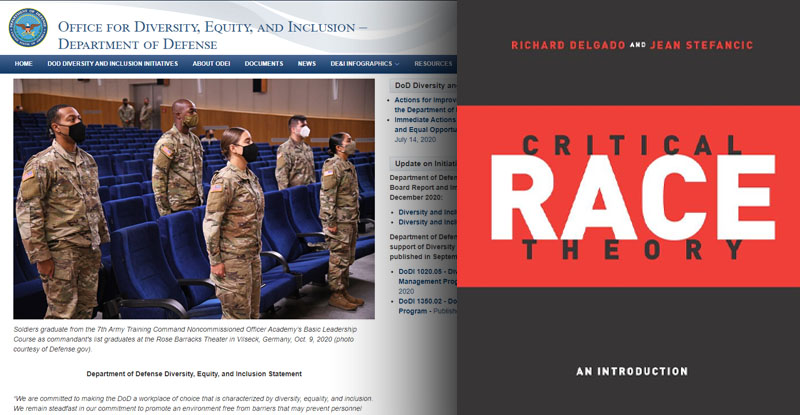

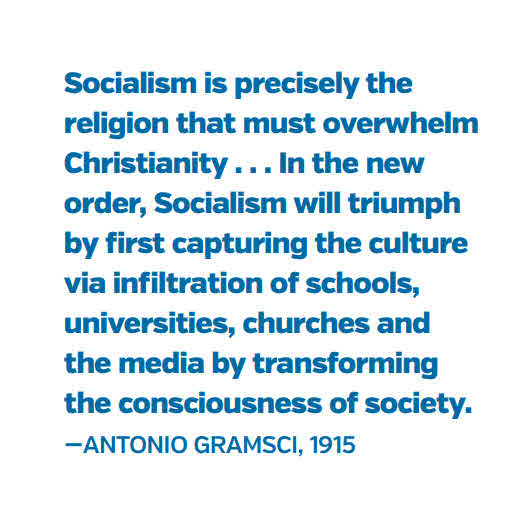
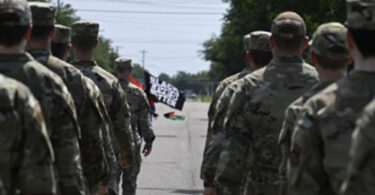
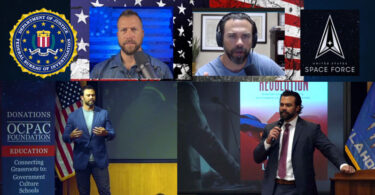

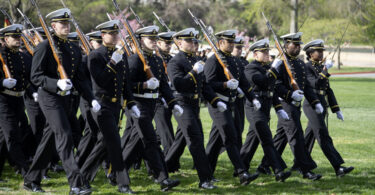

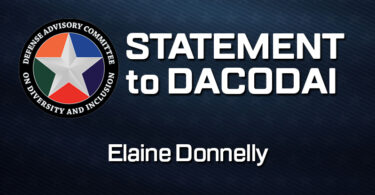
Leave a Comment